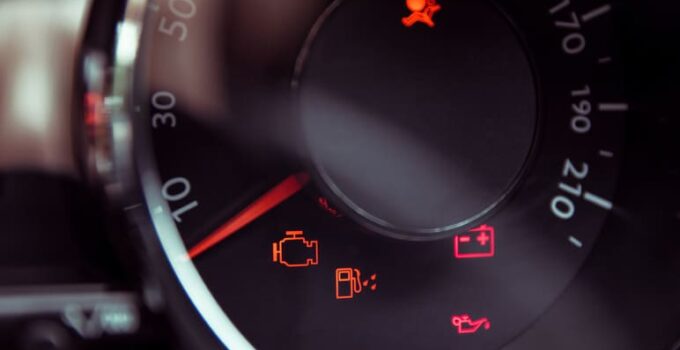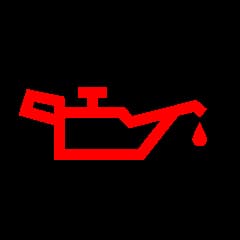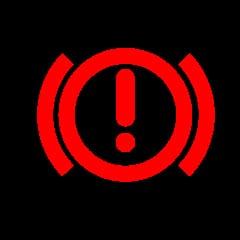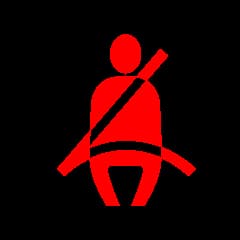
All of a sudden it happens. You have just been driving relaxed and suddenly the check engine light comes on. In the following article, we discuss the most important warnings and what each indicator light in your car means. This way you can relax and decide whether the light-up is to be expected or whether you need professional help.
Some of the most important warning lights in your car include: the oil warning light, the engine light, the battery and alternator warning light, the brake problem warning light, the 'low oil' light, the seat belt warning light, the check engine light , the warning light for worn brake pads, the airbag control, the tire pressure control, the preheating control, the ESP control light, the control lights for high beam, fog lights, rear fog lights, and cruise control, the warning light for the „washer fluid is your car running out“ and the fuel warning light.
Contents
How to correctly assess an indicator light
First of all, the indicator lights on your dashboard are all different colors. You will usually find red, yellow, green and blue indicator lights there. If a red indicator light comes on while driving, this indicates a major problem. So if a red light comes on, you should first get to the bottom of the matter. You should also take a closer look at yellow warning lights. On the other hand, green and blue light signals are usually only indications, which show, for example, that you have switched on your low beam.
The control lights for your lighting system
There are a number of indicator lights for the lights on your car.
|
|
First of all, most cars have a warning light that indicates that the headlights are on. |
|
|
In addition, there is a blue indicator light for the switched on high beam. |
|
|
Additional indicator lights indicate that you have switched on your fog lights. |
|
|
Your rear fog light |
|
|
Resp. may also have switched on the parking lights. |
However, the latter can only be found in individual vehicle types and variants.
Which warning lights can still light up without indicating a serious problem?
|
|
Another frequently encountered indicator light shows that you have activated your cruise control. Since this is usually intentional, this is of course no reason to hold. This warning light only serves to inform you that the system is active (this can easily be forgotten on long journeys on the motorway). However, if this warning light comes on even though you did not intend to switch on your cruise control, extreme caution is required. As a rule, however, this system is switched off automatically when braking or changing gear. In the event of a malfunction, go to a workshop immediately, otherwise great danger can arise. |
|
|
Another rather harmless warning light is the display for „the wiper water is running out on your car“. Not every vehicle has such a message, since the corresponding sensors are not always installed in the wiper water tank. However, if this is the case, then you should (at least on longer journeys or in the appropriate weather conditions) refill the appropriate tank when the wiper water lights up. |
|
|
The same applies if the fuel gauge, also known colloquially as the fuel warning light, lights up. In this case, you should fill up with fuel soon so that you don't break down somewhere with your car. It is also advisable not to completely empty your tank. On the one hand, especially with a diesel engine, you may find that after simply topping up the tank, your car will not start (air in the fuel line). On the other hand, the accumulated impurities in the fuel can get into your engine and cause damage. |
|
|
Speaking of diesel engines: Corresponding vehicles have a glow plug control. This is because certain engine parts must first reach an appropriate temperature for your power unit to function. The so-called glow plugs are responsible for this. After switching on the ignition, the glow plug check now shows that these are active. In older vehicles or when the outside temperature is very cold, you should wait until this warning light goes out before actually starting the engine. |
Signals that are active when the ignition is switched on and should then go out
|
|
There are some warning lights in your car, which always light up at first, but then go out promptly (after starting the engine at the latest). In the case of diesel engines, this includes the glow plug check already mentioned. But we also provide you with the explanation for other symbols in your dashboard. In particular, the warning light for your battery and alternator will light up until the engine starts. If this remains active even after your vehicle has been started or if it lights up while driving, you should check your vehicle electrical system with the main focus on the starter battery and alternator. A specialist workshop will also help you with the targeted problem diagnosis. |
|
|
The engine light or engine indicator light is also active as long as you have not started it. This is primarily due to the fact that the motor self-test or its self-monitoring can only function if this is also active. However, if this warning lamp lights up while driving, an immediate visit to the workshop is essential, because only there can the fault memory be read out correctly. The possible causes are very diverse and range from problems with the ignition system to faulty engine timing. |
|
|
However, many of the other warning lights, such as the oil warning light, engine temperature warning light, worn brake pad warning light, tire pressure monitor and ESP warning light, only come on for a second or two to show you that the warning light is still working. The airbag indicator also lights up for a few seconds (during the self-test) and should then go out again. If the system detects a problem (not communicating with a sensor or airbag, or the sensors are reporting conflicting data), the airbags are deactivated and the airbag warning light stays on. This poses a safety risk, so you should seek repairs in a specialist workshop immediately. |
|
|
If the seat belt warning light illuminates, which is usually accompanied by an audible signal, you should make sure that your seat belt (and that of any passenger) is correctly fastened. If this remains active, the seat belt sensor in the buckle may have a problem. |
Critical warning lights of your car
< table>





Conclusion
You don't have to panic every time you see a warning light on your car's dashboard. Often these are purely control displays or warnings. You should still take the latter seriously and get to the bottom of the causes. We have shown you here when you need to take which steps.
A tip from CarTipsandmore:
Begin by familiarizing yourself with the meaning of car light signals and symbols or with the familiar to individual indicator lights. In this way, you will know immediately in an emergency and do not have to start looking it up on the Internet or in the vehicle manual. If you need more detailed information, you will find it in your technical operating instructions.













